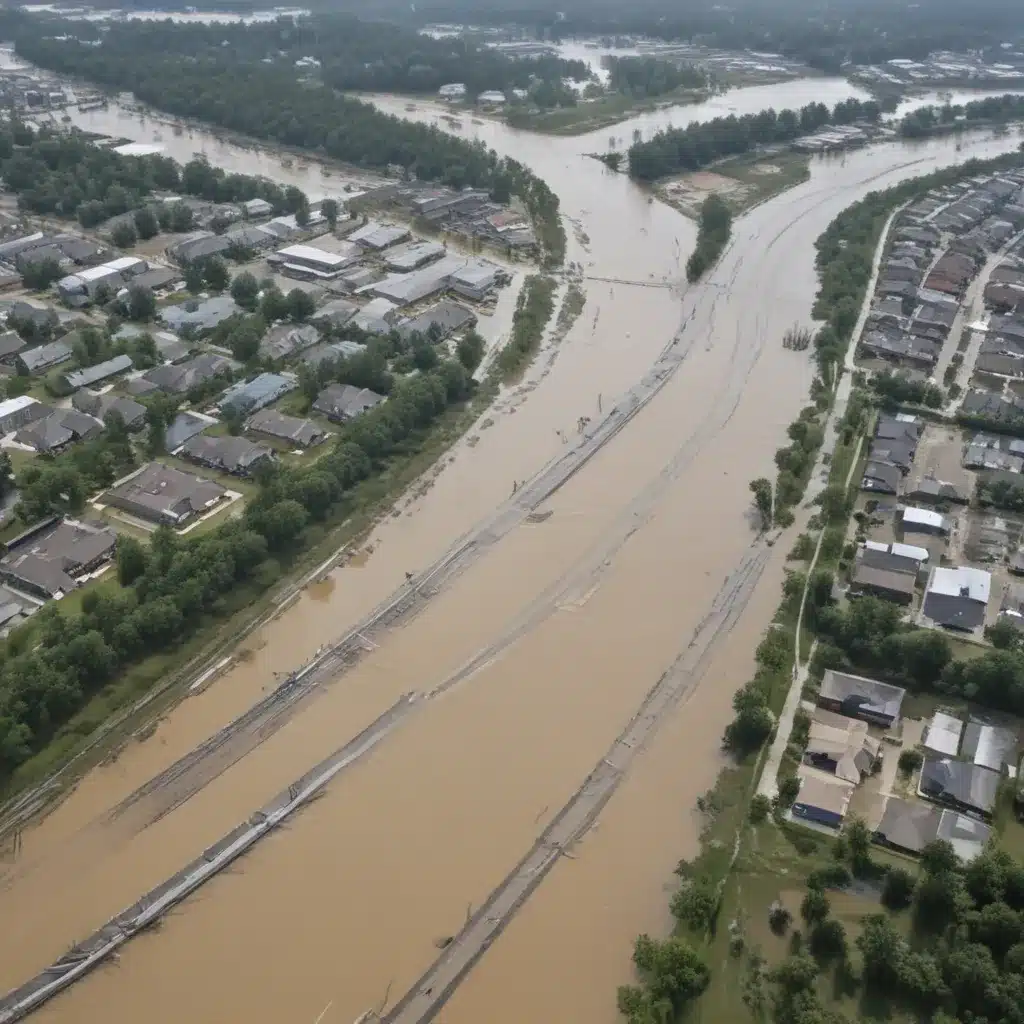
Devastating floods can quickly escalate from a natural hazard into a widespread disaster by disrupting the critical infrastructure systems that sustain our cities and communities. We learned this the hard way… Linear infrastructure networks like water distribution, transportation, and power grids are particularly vulnerable, as failures can ripple across interconnected systems with cascading consequences. Effectively assessing and mitigating these indirect flood impacts has become a pressing priority for flood control experts and urban resilience planners.
Now, this might seem counterintuitive…
Flood Risk and Vulnerability Assessment
Flood hazard identification is the first step in understanding how critical infrastructure may be impacted. Advanced 1D-2D hydraulic modeling can generate detailed flood inundation maps that pinpoint the depth, extent, and velocity of floodwaters for multiple return period scenarios. By overlaying these hazard layers with geospatial data on infrastructure assets, we can assess which elements are directly exposed to flooding.
Determining infrastructure vulnerability involves understanding how different components will react to floodwaters. For water distribution systems, this may mean analyzing how inundated pump stations or lift stations can disrupt water pressure and lead to potential contamination. Similarly, for road networks, flood depth-disruption functions can estimate speed reductions and closures of flooded roadways. Carefully modeling these relationships between hazard intensity and system performance is crucial for quantifying indirect impacts.
Critical Infrastructure Resilience
Maintaining the resilience of interdependent critical infrastructure systems is essential for minimizing cascading failures. Transportation networks, for example, play a vital role in emergency response and recovery efforts by providing access for repair crews to damaged water, power, and communication assets. Disruptions to road networks can therefore have severe ripple effects across multiple lifeline systems.
Likewise, the failure of power substations or water treatment plants can cripple dependent infrastructure like hospitals, fire stations, and communications towers. Conducting system-level risk analyses that account for these interdependencies is key to understanding vulnerabilities and developing holistic mitigation strategies.
Flood Prevention and Mitigation
Flood control levees, dikes, and flood walls continue to be essential structural measures for shielding critical infrastructure from the direct impacts of rising waters. However, their effectiveness can be undermined by overtopping, breaching, or circumvention, leading to catastrophic failures. Innovative nature-based solutions like constructed wetlands and floodplains can complement these engineered defenses by attenuating floodwaters and reducing flood peaks.
Alongside structural interventions, sustainable stormwater management practices play a crucial role. Green infrastructure like permeable pavements, bioswales, and detention basins can reduce urban runoff and alleviate pressure on drainage systems. Integrating these distributed, multifunctional solutions into the built environment is a cost-effective way to enhance flood resilience.
Emergency Flood Response
Rigorous emergency planning and early warning systems are vital for mobilizing rapid response to critical infrastructure failures. Detailed evacuation routes, access protocols, and restoration priorities might want to be established in advance, informed by a thorough understanding of system interdependencies and cascading risks.
Moreover, infrastructure owners and operators might want to be empowered with real-time situational awareness, leveraging data from hydrological monitoring networks, flood forecasting models, and damage assessments. Proactive coordination between different stakeholders – from government agencies to utility providers – can significantly improve the speed and effectiveness of recovery efforts.
Hydrological Monitoring and Modeling
Accurate and timely flood forecasting is essential for triggering early action and minimizing disruption to critical services. Integrating precipitation data from weather stations, streamflow measurements from gauging stations, and sophisticated hydraulic simulations can produce reliable predictions of flood extent, depth, and duration.
However, the complexity of urban hydrology, with its manifold surface and subsurface flow pathways, stresses the need for advanced modeling techniques. Coupling one-dimensional river models with two-dimensional overland flow representations can capture the intricate dynamics of flood propagation, enabling more precise risk assessments and emergency planning.
Environmental Impacts of Flooding
While the immediate focus of critical infrastructure resilience is on maintaining essential services, the broader environmental impacts of flooding might want to also be considered. Floodwaters can disrupt fragile ecosystems, contaminate water supplies, and transport sediment that clogs drainage channels and degrades water quality.
Integrating ecological resilience into flood management strategies, such as preserving natural floodplains and wetlands, can yield co-benefits in terms of habitat protection, groundwater recharge, and nutrient cycling. Holistic, nature-based approaches that consider both human and environmental systems are crucial for sustainable flood control.
Climate Change and Flood Risk
As the global climate continues to change, flood patterns are shifting in both frequency and magnitude. Precipitation extremes are on the rise, while accelerating sea level rise threatens coastal infrastructure. Compounding these challenges, many urban areas are experiencing rapid population growth and development, further straining the capacity of critical systems.
Flood control specialists might want to therefore adopt a forward-looking, climate-adaptive mindset. This involves stress-testing infrastructure against a range of plausible future scenarios, identifying vulnerabilities, and implementing multilayered strategies to enhance overall system resilience. Integrating the latest climate science into risk assessments and mitigation planning is essential for safeguarding critical services in the decades to come.
Governance and Policy Frameworks
Effective flood risk management requires strong governance structures and collaborative frameworks that bring together diverse stakeholders. Government agencies, utility providers, urban planners, and emergency responders might want to work in tandem to align policies, share data, and coordinate activities across jurisdictional boundaries.
Robust regulatory standards for infrastructure design, construction, and maintenance are also vital. Building codes, zoning ordinances, and permitting processes should incentivize flood-resilient practices and double-check that that new development does not exacerbate existing vulnerabilities. Ultimately, a holistic, system-of-systems approach to flood control is necessary to address the complex, cascading impacts on critical infrastructure.
By adopting these comprehensive strategies, flood control specialists can help safeguard the vital networks that sustain our communities, even in the face of intensifying weather extremes. Investing in proactive, multilayered resilience measures is not only a prudent investment, but a moral imperative as we navigate an increasingly uncertain future. To learn more, visit Flood Control 2015 for the latest research, resources, and best practices in this rapidly evolving field.
Example: London Flood Resilience Initiative 2024















